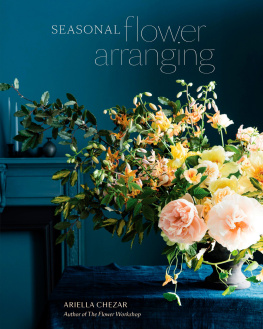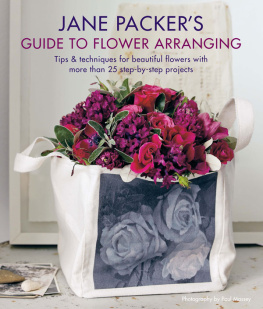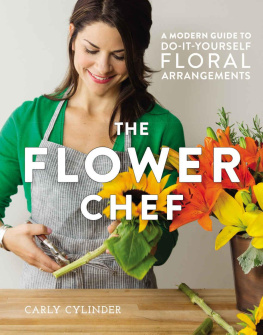Introduction
When asked to write an introduction for this book, the first thing we did was to put on our boots, grab the dog and go for a walk to gather some inspiration. This represents the essence of what this book is about: being inspired by the things around you, freeing your creativity and having lots of fun making the designs either for your home, for a special event, or with a group of friends.
Together we have created an innovative internationally recognized floral design and floristry school called the Academy of Floral Art. In this school we offer enthusiasts several courses that range from the prestigious British City & Guilds Master Diploma in Professional Floristry Level 5 through to our fun and inspirational recreational floral design courses.
The Academy of Floral Art is represented on the British Floristry Association Education Board, and this year we have been nominated as one of the top floristry colleges in the UK. We are truly passionate about creating excellence in floral design and floristry, as well as inspiring a new generation of floral designers to continue this beautiful tradition.

The designs
We have created a range of beautiful designs for this book and we hope these will inspire you to try them out for yourselves. In creating this collection, it was important that the designs were romantic, pretty and soft; it was also important that the designs were easy to recreate without using an abundance of floral material, thus keeping your costs as low as possible.
We love discovering materials while on walks or in the garden that can be used in our designs. We would encourage you to source similar local materials whenever possible although, at the same time, all the designs can be made with artificial flowers and foliage. We would also like to encourage you to be flexible; if you cant get hold of the flower or container shown, simply adapt the design to work with what you do have.
The team
As well as creating our own designs for the collection, we invited three other floral designers to join our team to add diversity and style to the collection:
Donna Cann and Amanda Randell are two of our top students, who have just completed with us the prestigious City & Guilds Master Diploma in Professional Floristry, and they have been able to contribute considerable flair and originality to their designs.
Catherine Date, who has taught for us on a freelance basis and holds a National Diploma of the Society of Floristry, has been inspirational, as her experience in wedding and competition design brings a strong commercial element to her beautiful work.
The five designers working on this book were presented with six areas of inspiration to work with, as follows:

Theme 1: The beach; Theme 2: Garden wedding

Theme 3: Hotel; Theme 4: Marquee

Theme 5: Country house; Theme 6: Eco-friendly
If you are looking for further inspiration we have a DVD that accompanies this book, which shows a range of designs and some of the techniques we have used; it is available from our website. Maybe one day we will even have the opportunity to meet you on one of our courses, again available for purchase from our website.
For whatever occasion you are creating your designs for a wedding, entertaining or simply to decorate your home we do hope you will enjoy making the designs as much as we have. We would love to see your interpretations, so please send us a picture on Facebook and we may even put it on our website.
Website: www.academyoffloralart.com
Facebook: www.facebook.com/pages/Academy-of-Floral-Art
How to Use this Book
We have designed this book like a course in Levels, each one representing an increased level of experience. If you work consistently through Levels 1 to 3 you will expand your knowledge; alternatively, if you would like to dip in and out of the projects you will be able to quickly find a design suitable for your level of expertise.
If you are a novice, you may like to start at the beginning and build up your skills as you work through. On the other hand, if a design catches your eye and inspires you, then that might also be the perfect place to start.

Level 1: These designs are excellent for a beginner to try, as no experience is required. Many use limited flower material, which can help to keep your costs down. Sometimes the simplest things are the best!
LEVEL 2: These designs are little more advanced and use more techniques, making them ideal for those with some experience of working with flowers. Essentially, these designs need a little more understanding with the placement of the flowers.
LEVEL 3: Experience is essential for these more advanced designs. They are more challenging and often take longer to make owing to the intricate techniques used. These are ideal for those who love to explore the possibilities of construction in floral design and we hope they may inspire you to create your own versions.
Our flower recipes
We have styled the book like a recipe book. So along with the essential floristry techniques that are explained at the end of the book, each design has:
A list of flower, foliage and sundry ingredients to gather for making up the design.
An indication of the approximate time it will take to complete each project is given.
A recipe that explains with clear instructions and step photos exactly how to assemble the design.
Make It Chic and Make It Unique tips that offer suggestions to bring a little extra flair to your design.
Fresh or artificial flowers
All of the designs can be made with either fresh or artificial alternatives with the exception of , the first project in Level 2.
Flower names
Where the common name is widely recognized, we have used this for the flower e.g. rose. Otherwise we have used the Latin names, with their common alternatives where appropriate, presenting them all in lower case in order to make them easier to read.

Getting Started
Selecting the location
Before starting a design, it is always best to consider the location in which it will be displayed. This includes the setting, the surface on which the design will sit, and the colourways and theme of the room decoration. You may also need to measure the space available to establish the best size for the arrangement.

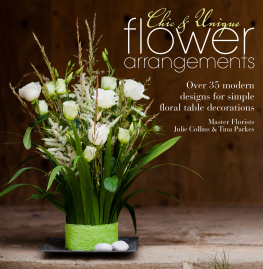
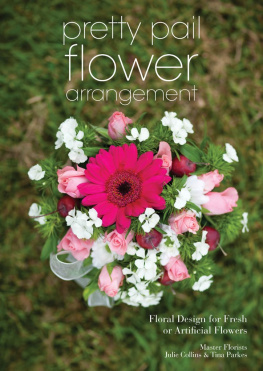


![Shinichi Nagatsuka [永塚慎] - Easy Ikebana: 30 Beautiful Flower Arrangements You Can Make in Three Simple Steps](/uploads/posts/book/306395/thumbs/shinichi-nagatsuka-easy-ikebana-30.jpg)
